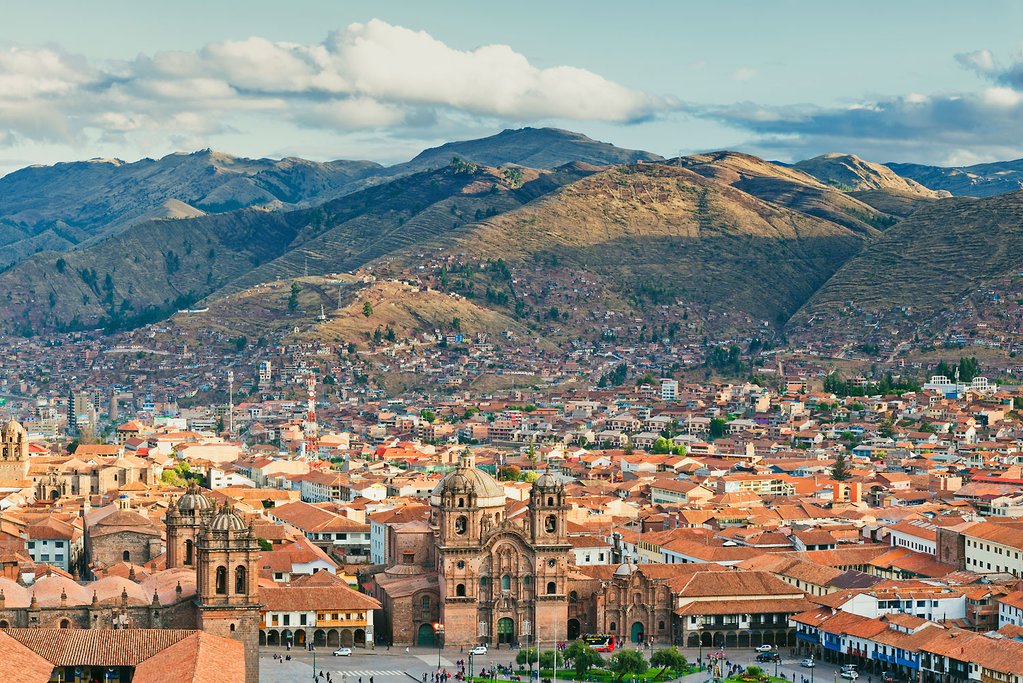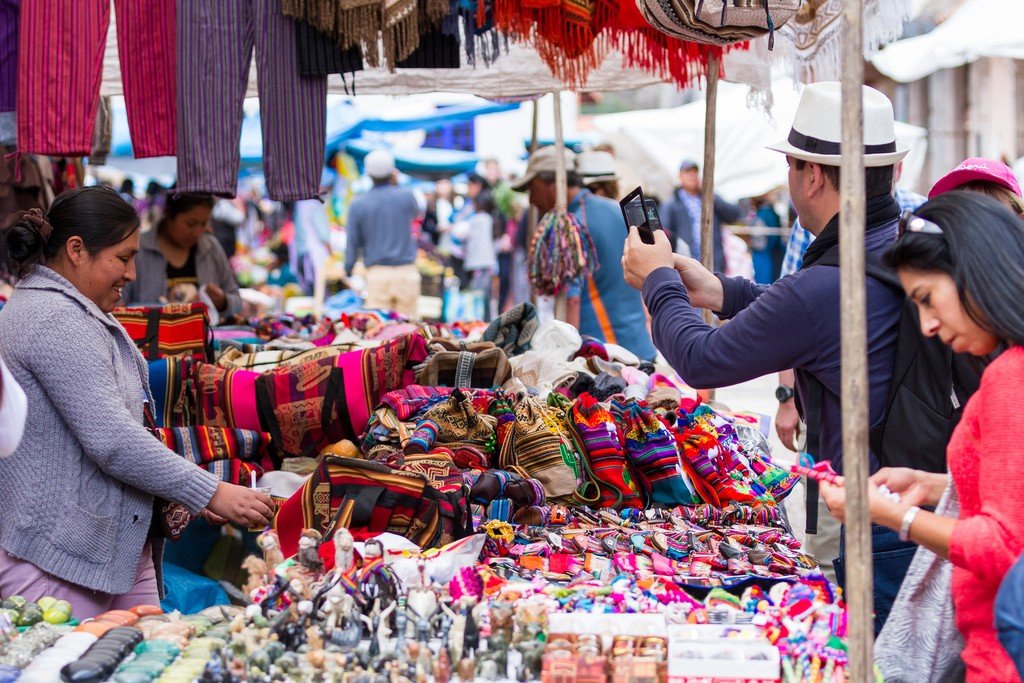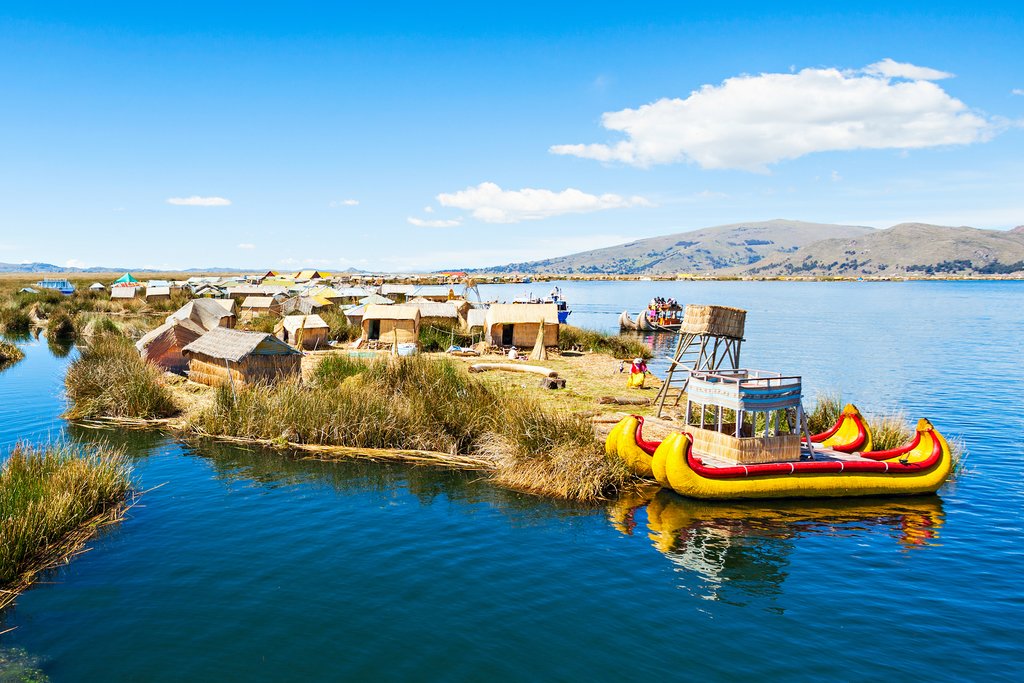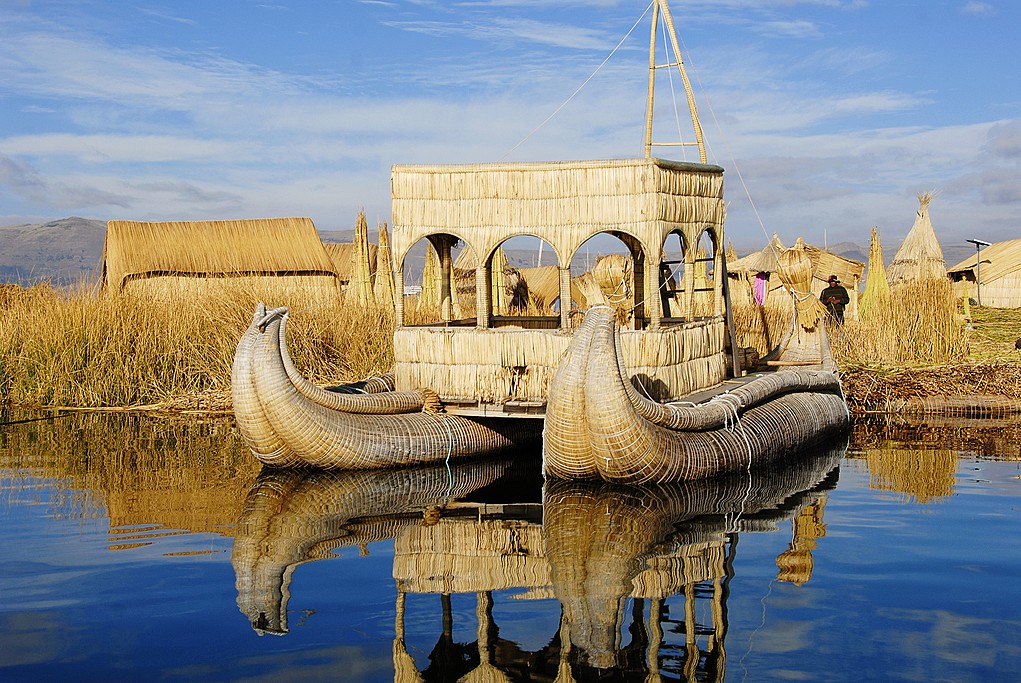Highlights
- Sample ceviche and pisco sours in Lima
- Explore the lost city of Machu Picchu
- Cruise around Lake Titicaca on a traditional boat
- Discover Inca ruins in the Sacred Valley
Brief Itinerary
| Day | Highlights | Overnight |
|---|---|---|
| Day 1 | Arrival in Lima | Lima |
| Day 2 | Lima Market & Food Tour | Lima |
| Day 3 | Fly to Cusco - Free day in the City | Cusco |
| Day 4 | Tour the Sacred Valley: Cusco - Pisac - Ollantaytambo | Ollantaytambo |
| Day 5 | Maras & Moray Tour & Train to Aguas Calientes | Aguas Calientes |
| Day 6 | Machu Picchu Excursion: Aguas Calientes - Machu Picchu - Cusco | Cusco |
| Day 7 | Arriving in Puno: Cusco - Puno | Puno |
| Day 8 | Lake Titicaca Tour: Uros Floating Islands & Taquile Island | Puno |
| Day 9 | Fly from Puno to Lima, Depart Peru |
Detailed Itinerary
Day 1: Arrival in Lima

Welcome to Lima, Peru's largest city and central metropolitan hub, and home to a third of the country's population. Located at the site of a pre-Columbian indigenous Ychsma settlement, which was conquered by the Inca empire in the 15th century and later by the Spanish conquistadores, Lima has a fascinating history and a diverse mix of cultures. Amerindian, European, Afro-Peruvian, and Asian—especially Chinese and Japanese—influences make Lima a dynamic and exciting city to explore.
Lima's breezy location on the Pacific Ocean and mild desert climate make it the perfect city for exploring on foot. Head downtown to mingle with locals, stretch your legs, and grab a bite to eat in one of the city's many award-winning restaurants.
Suggested activities include:
- Explore the historic center of Lima, a UNESCO World Heritage Site packed with fascinating Spanish architecture. Start with a scenic tour of the colonial downtown, which emanates from the main square. Stroll over to the 16th-century Cathedral, which took 80 years to construct and was built in the grandiose style of the Spanish Empire.
- Visit the Casa Aliaga, a colonial mansion granted by chief conquistador Francisco Pizarro to Jerónimo de Aliaga, one of his captains, in 1535. This is the only house from that era that still belongs to the same family.
- Stroll around the Pueblo Libre district to the privately owned Larco Museum of pre-Columbian art, housed in a beautifully restored viceregal mansion built over a seventh-century pre-Columbian pyramid. The museum boasts a vast pre-Colonial collection of gold and silver artifacts.
- In the evening, head to the eclectic "Love Park" in the upscale coastal district of Miraflores, where you can admire a huge kissing statue and beautiful mosaic walls. The park is built on the cliffs of Chorrillos and is a perfect place to enjoy a spectacular sunset over the Pacific.
- Enjoy a nightcap at an open-air cafe or restaurant in the diverse Miraflores neighborhood.
Day 2: Lima Market & Food Tour

Spend the day discovering Lima's food scene. With a vibrant combination of indigenous American, African, Asian, and European culinary influences, Lima is one of the world's most impressive gastronomic and cultural centers.
Start the day early in Lima's historical center to visit a local mercado—a fresh food market—to taste the local produce and sample spices, fruits, and various baked bread. Taste different types of pisco (a high proof brandy produced locally in the wine-making regions of Peru and Chile). Make sure to try ceviche, a fresh seafood dish marinated with salt and lime juice, and a traditional pisco sour, which is a Peruvian classic.
Stop for lunch at one of Lima's top restaurants and enjoy a delicious meal on a patio overlooking the Pacific Ocean. Stroll to the bohemian district of Barranco—a popular oceanside neighborhood for artists, tourists, and locals alike—for a relaxed afternoon drinking coffee and sampling Peruvian desserts.
Day 3: Fly to Cusco - Free day in the City

Head to the Lima airport for your transfer flight to Cusco. This ancient city is the former capital of the Inca empire, which reigned from the 13th to 16th centuries after conquering the Killke settlement on the same location.
Remember that you will be 11,000 feet above sea level, so take it easy and remember to drink lots of water. Since Cusco was designed by the Incas as a city for walking, start your exploration of the narrow stone alleyways on foot. Take a walk through the plaza—if the weather is beautiful, it's a perfect place to sit on a balcony and have a cup of coca tea while adjusting to the elevation.
Suggested activities include:
- See the Cathedral, the most imposing monument in the central Plaza de Armas and a repository for Cusco's colonial art. Its construction lasted for almost 100 years, beginning in 1560 and ending in 1654.
- Discover the elaborate Puca Pucara ruins—an architectural complex with multiple plazas, baths, aqueducts, walls, and towers. It is believed that the entourage of the Incan emperor used it while he stayed at Tambomachay, the elaborate estate and baths nearby.
- Explore San Blas, an old bohemian quarter famous for its picturesque white walls, blue doors, and creative artisan community.
- Eat lunch at a local Peruvian restaurant and sample local flavors and cooking techniques—crackling pork, pickled vegetables, seasonal flavors, bread baked in earthen ovens, roasted vegetables, and sweet donuts make for a delicious and filling meal.
Chat with a local specialist who can help organize your trip.
Day 4: Tour the Sacred Valley: Cusco - Pisac - Ollantaytambo

Leave the hotel in Cusco for a drive into the Sacred Valley en route to Pisac, a village known for its traditional market and immense Inca fortress. During the visit, you will have plenty of opportunities to stop for photos as you pass terraces, irrigation canals, and picturesque mountain views.
In the afternoon, depart for the town of Ollantaytambo, which contains some of the best-preserved Inca architecture in the Sacred Valley. Roam the winding alleys and vast plazas and gaze upon a marvelous llama-shaped ruin before heading to a local hotel for the night.
Day 5: Maras & Moray Tour & Train to Aguas Calientes

This morning, you'll depart from your hotel in Ollantaytambo for the journey to Moray. Along the way, you'll see the snow-capped peaks of the Andes, lush yellow fields of wheat, and traditional villages. Upon arrival in Moray, you'll visit the three famous amphitheater-like terraces made by the Incas. These terraces are carved deep into the earth in the shape of a bowl. It is believed that the Incas once used these terraces as agricultural laboratories to determine the optimal conditions for growing crops.
When you are done exploring Moray, you will travel about two miles to the salt mines of Maras. This village is known as a former salt-producing center and is thought to date back to pre-Incan times. There are over 3,000 salt pools carved into the mountainside: each is filled daily by a stream of water.
Once you are done with the visit, you will head back to Ollantaytambo in time to catch your train to Aguas Calientes, gateway to Machu Picchu.
Day 6: Machu Picchu Excursion: Aguas Calientes - Machu Picchu - Cusco

Get an early start to beat the crowds and get the best views of the ancient ruins. From Aguas Calientes, it's an easy 25-minute bus ride up to Machu Picchu.
This 15th-century Inca citadel is located at 7,970 feet. It's a masterpiece of engineering that served as a sanctuary and retreat for the Incan Emperor Pachacutec and his royal court. Machu Picchu, which means "Old Mountain," is considered a World Heritage Site by UNESCO and is one of the new Seven Wonders of the World.
Built as a seasonal residence for the Inca family, Machu Picchu was rarely home to more than 800 people, and during the royals' absence, a mere 100 servants would remain at the site to maintain the grounds. Machu Picchu was abandoned 100 years after construction due to the Spanish conquest and remained largely hidden to the outside world until the early 20th century.
Your guide will lead you around the site and explain the different buildings and curious corners of the building complex. Approximately one-third of the site has been reconstructed into its original structure, giving visitors a sense of the grandeur and artistry of the original citadel.
After the tour, take the bus back to Aguas Calientes for lunch and then board the train to Ollantaytambo. Upon arrival in Ollantaytambo, meet your driver for your transfer back to Cusco.
Day 7: Arriving in Puno: Cusco - Puno

Transfer to the Cusco airport to catch your flight to Juliaca and transfer to the city of Puno, located on the shores of Lake Titicaca. Lake Titicaca is the largest lake in South America. Although many bodies of water exist at higher elevations, Lake Titicaca's surface elevation of 12,507 feet makes it the highest lake in the world that is navigable by large commercial vessels.
Lake Titicaca is a hotbed of ecological diversity, archaeological ruins, tourism, and modern-day farming communities. The coastline outside of Puno is home to the Uros people, who live on floating reed islands made from the totora plant, a thick buoyant reed. Totora is used to make everything from homes and boats to the islands nearly half the size of a football field. The Uros people offer guided tours to their homes and sell traditional handicrafts to supplement their traditional hunting and fishing economy.
Several other ethnic groups, most notably the Quechua and Taquileños, inhabit several of the other larger islands on the lake, the majority of which have no electricity or paved roads. Visitors are welcome to select homes on this island for homestays.
Photographers and naturalists will enjoy seeing some of the many hundreds of aquatic and bird species, many of which are found nowhere else on earth.
It's a good idea to take it easy on your first day and acclimatize the elevation. Drink lots of water and make sure to rest. After arrival, check out some of the town's restaurants and cafes for a fresh and local dining experience.
Day 8: Lake Titicaca Tour: Uros Floating Islands & Taquile Island

Be sure to fuel up at breakfast this morning, as this full-day experience will last around nine hours.
Your first stop will be to one of the floating Uros Islands. It is believed that the Uros were one of the first ethnic groups to populate the Andean region. The Uros people live on man-made floating islands, which are constructed out of the totora reeds that grow in abundance around the lake. During your visit to these islands, you'll learn about their everyday life and traditions.
After your visit to the floating island, you'll head to lunch at a local restaurant on Taquile Island. Quinoa soup, fresh fish caught in the lake, and vegetables are a typical lunchtime meal in Taquile. After lunch, explore Taquile Island. This island remained mostly isolated from the outside world until the 1950s, and as a result, the Taquileños follow a very different way of life. On the island, decisions are made communally, there are no cars, and there is very little electricity - just the way the Taquileños like it. Taquile is also famous for the exquisite weavings created by local artists. Traditionally, the men spin the thread, and the women design and weave each piece.
In the evening, walk back to the main dock in Taquile and board a boat back to Puno. Upon arrival in Puno, transfer to your hotel for the evening.
Note that visiting Taquile requires a strenuous climb up 500 steps to the main part of the island. Elevation ranges from around 12,000 feet at the lakeshore up to more than 13,000 feet at the highest point.
Day 9: Fly from Puno to Lima, Depart Peru

Today is your last day in Peru. You'll transfer to Juliaca Airport, where you will catch your flight back to Lima and then transfer to your international flight back home or to your next destination. ¡Buen viaje!
